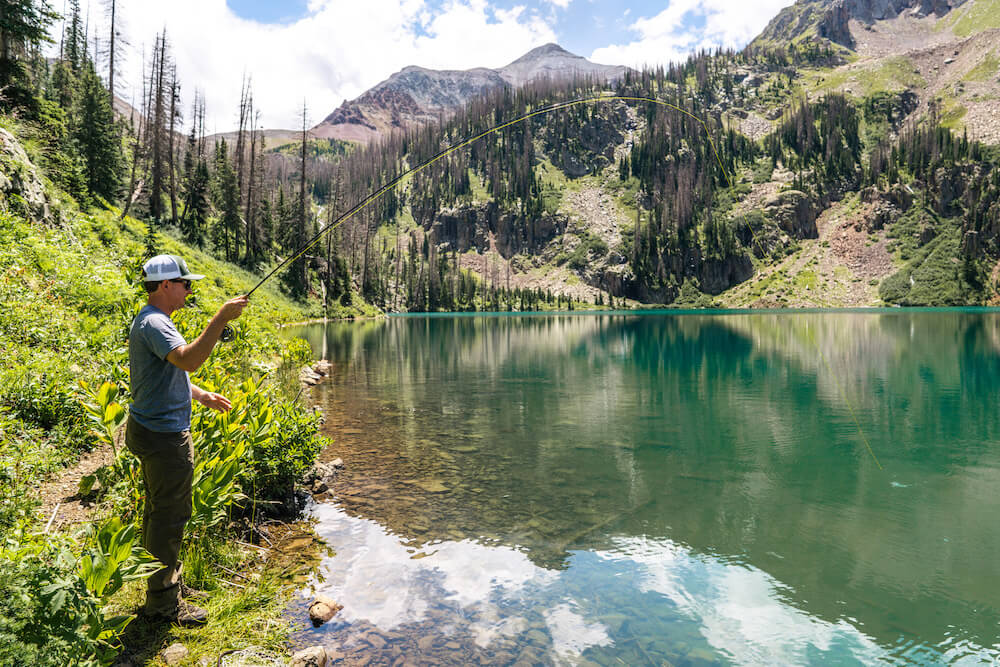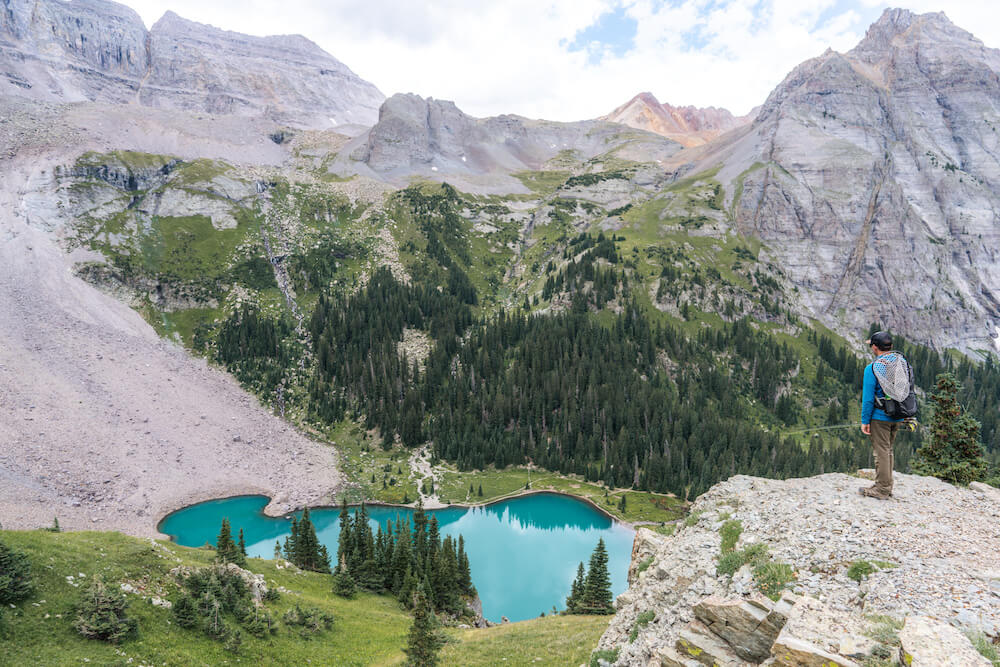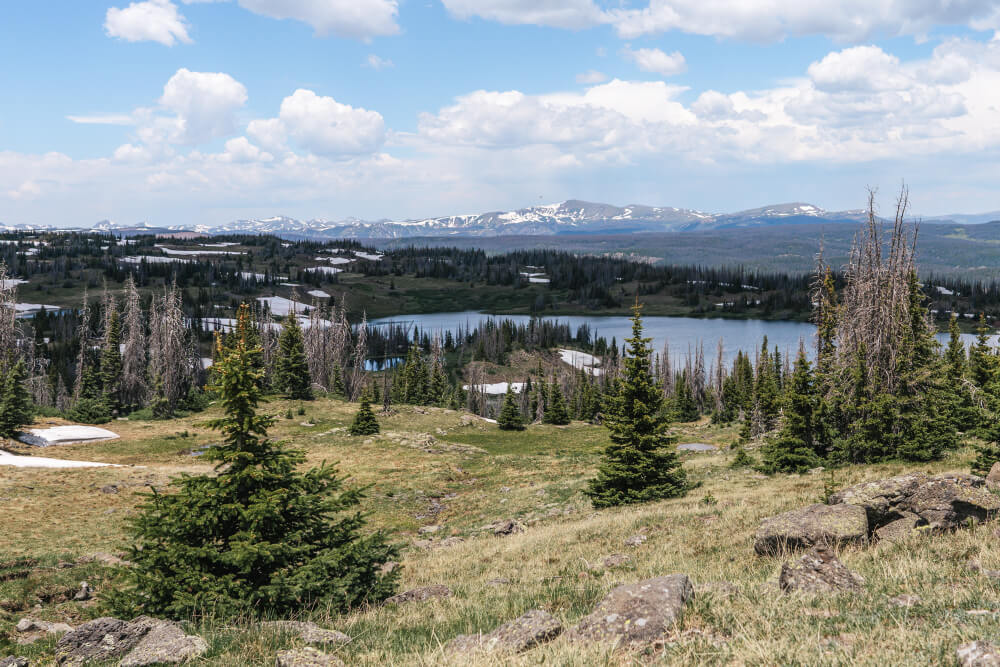We traveled many dirt road miles and hiked a few more to a pretty meadow with a perfect trout stream. And we were lucky enough to be rewarded with catching our first Rio Grande Cutthroat from its native waters. Cow pies aside, it was a great time fishing we hope to experience again some day.
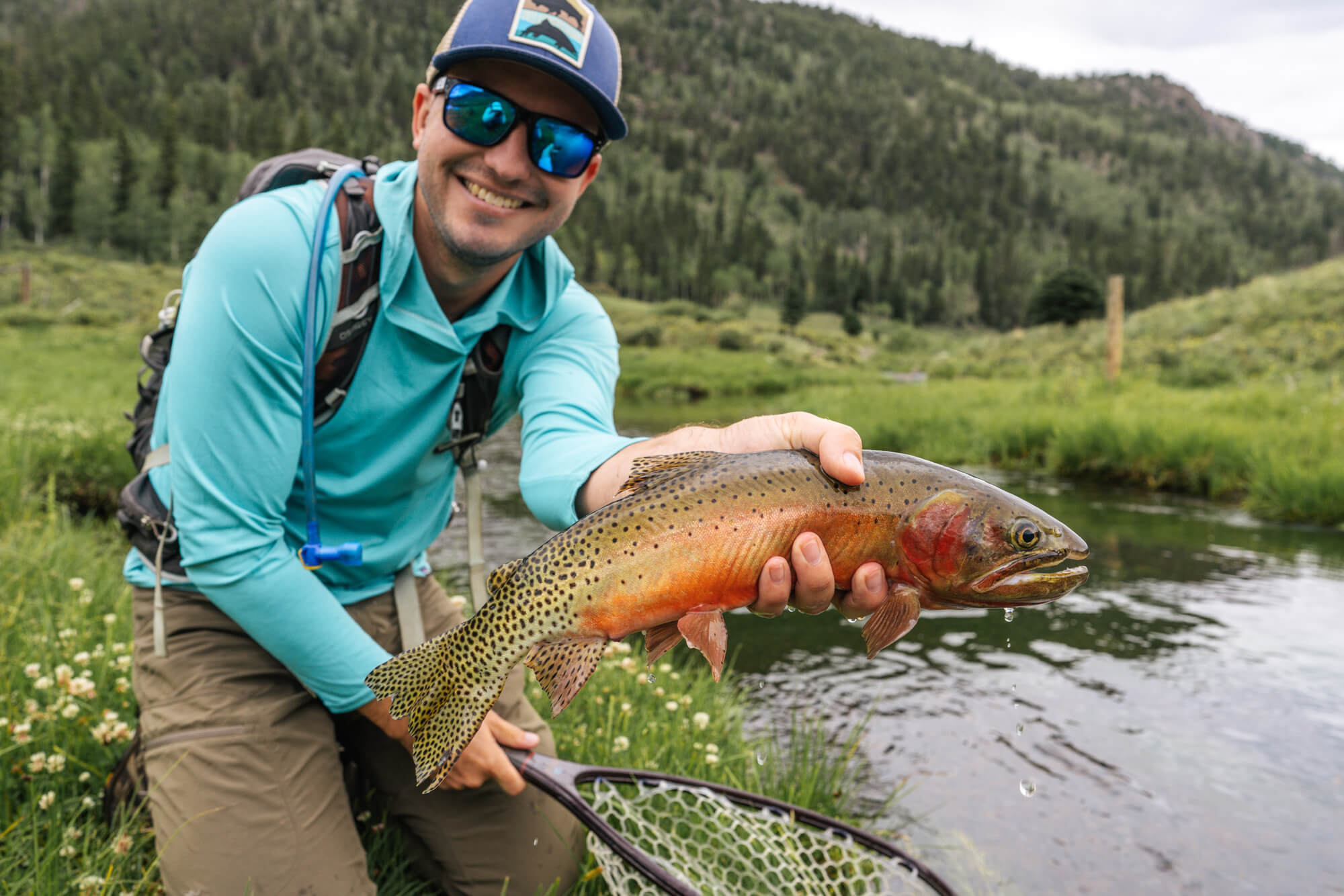
One of the items at the top of our to-do list during our week-long Colorado road trip through the San Juan Mountains was to catch our first native Rio Grande Cutthroat trout. Rio Grandes are a rare subspecies of cutthroat that used to dominate the upper Rio Grande River basin, but due to a variety of reasons now only live in 10% of their native range. Because of this, they are heavily protected by tough hikes or special fishing regulations (or both).
We scoped out a tributary of the Conejos River as good opportunity for us to land some Rio Grandes. The section we aimed to fish seemed to be a fairly short, easy hike and very clearly marked as a catch and release fishery – artificial flies or lures only. The catch was that trailhead is located in a remote part of Colorado requiring 20+ miles of dirt road driving littered with potholes. After a long, bumpy drive, we arrived at around 10:30 in the morning and shared the small parking area with just one other car.

Overall the hike is relatively flat, except for one hill in the first quarter mile. A handful of switchbacks lead up and around some private property. After gaining 200 ft or so, the rest of the hike is smooth sailing. The trail then descends into a thicket of some very large aspens.
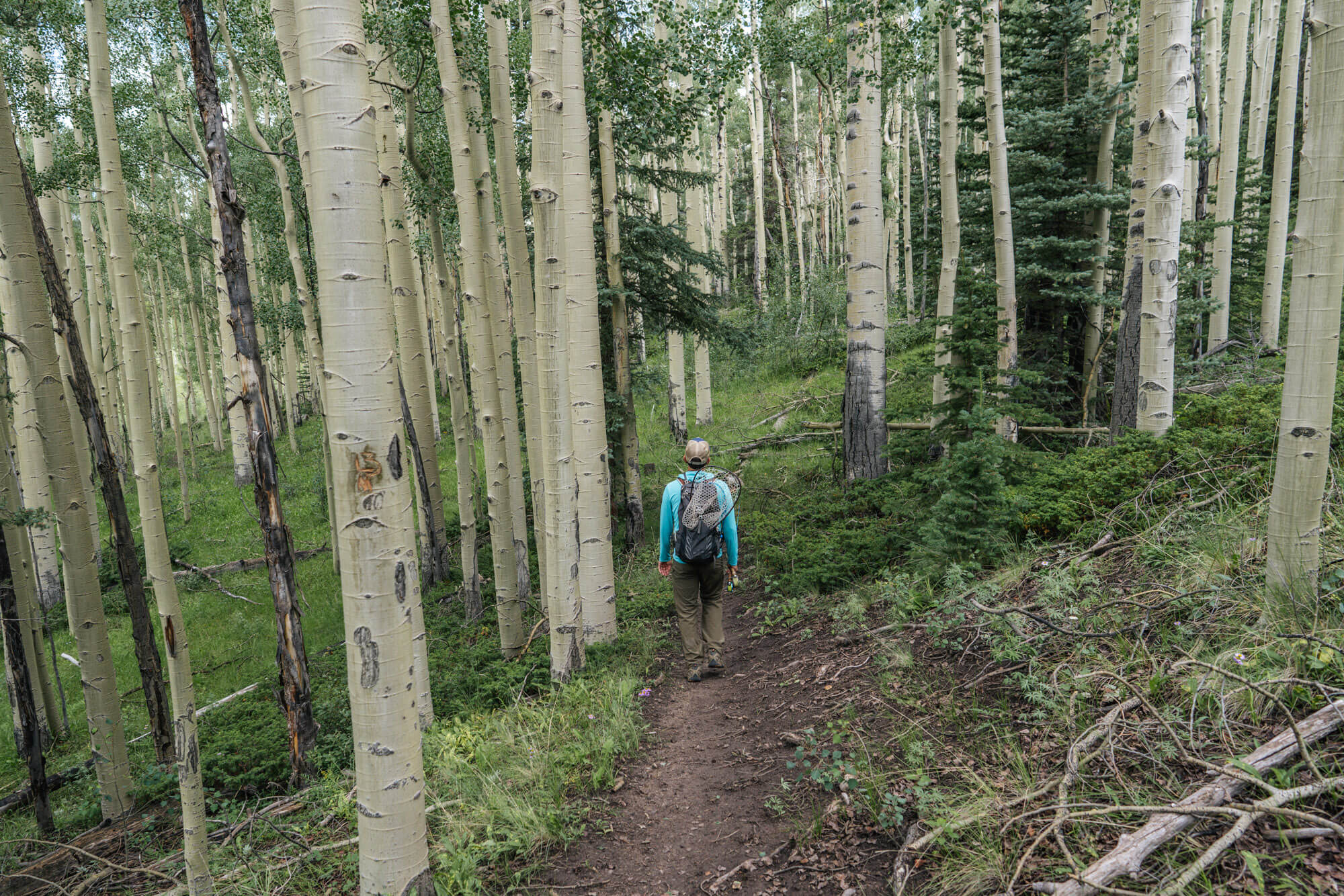
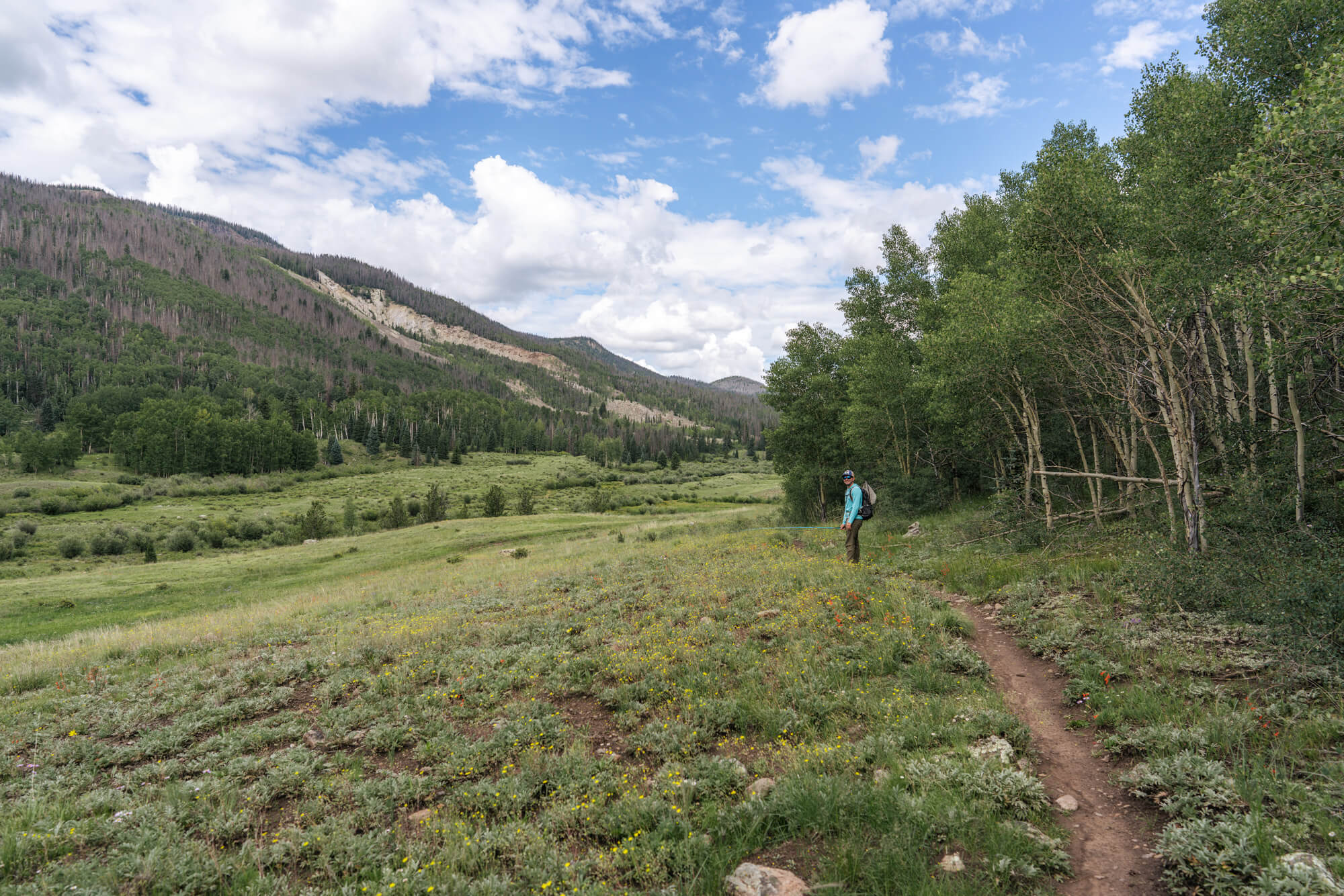
There’s private property fence located amidst the aspens. It’s not long until the aspens thin out and the valley opens up and the creek comes into view. We spotted some beaver ponds along the creek littered with rises, but we resisted the temptation and kept hiking towards our intended destination.
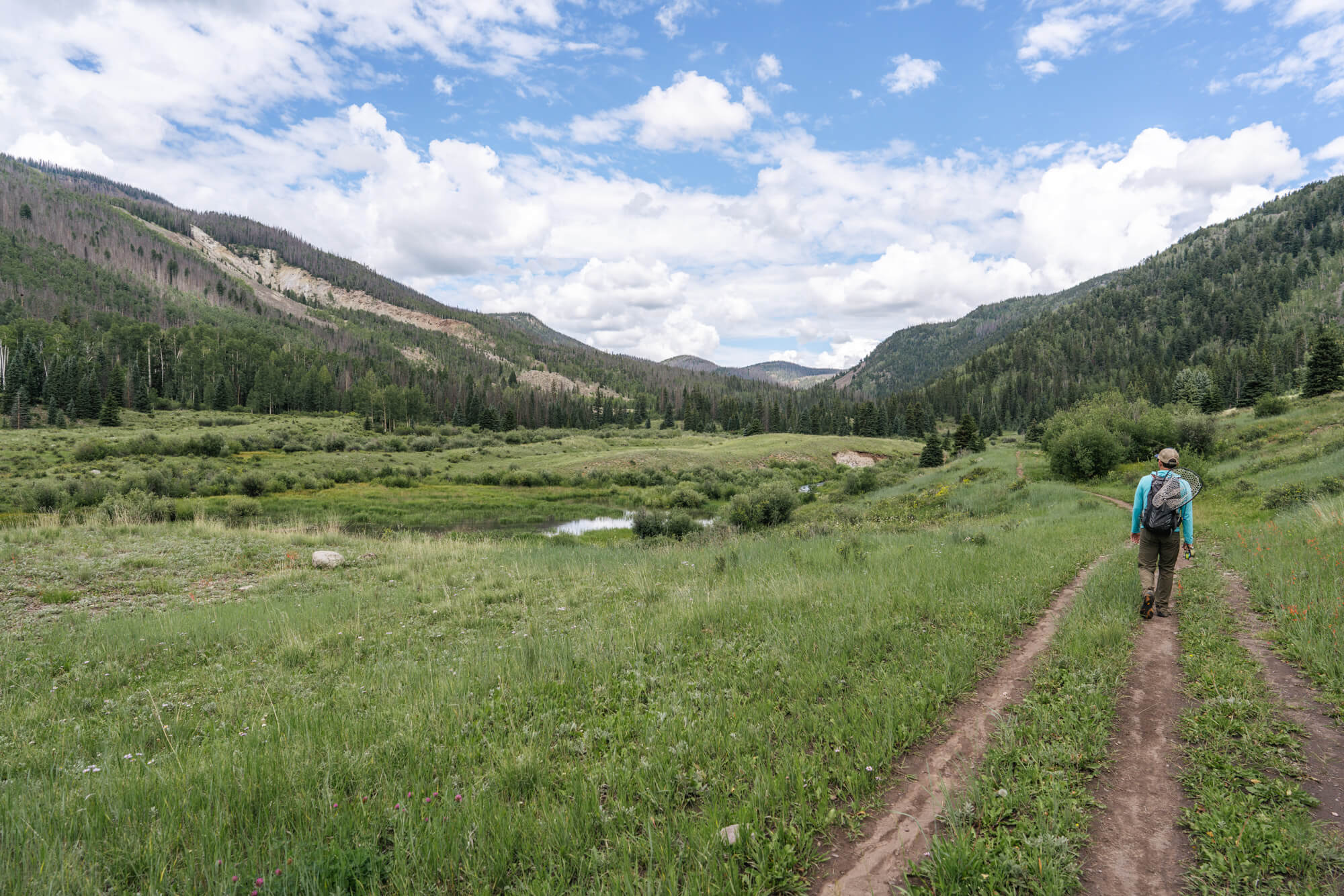
Along the trail there are a series of gates that allow ranchers that lease the land from the USFS to keep cattle in certain locations. At the last gate there’s a very worn sign declaring “Wild Trout Water” and the fishing regulations.

Beyond the gate is a small lake with some resident cattle grazing nearby. Once again we resisted the numerous rises for hopefully greener pastures ahead.
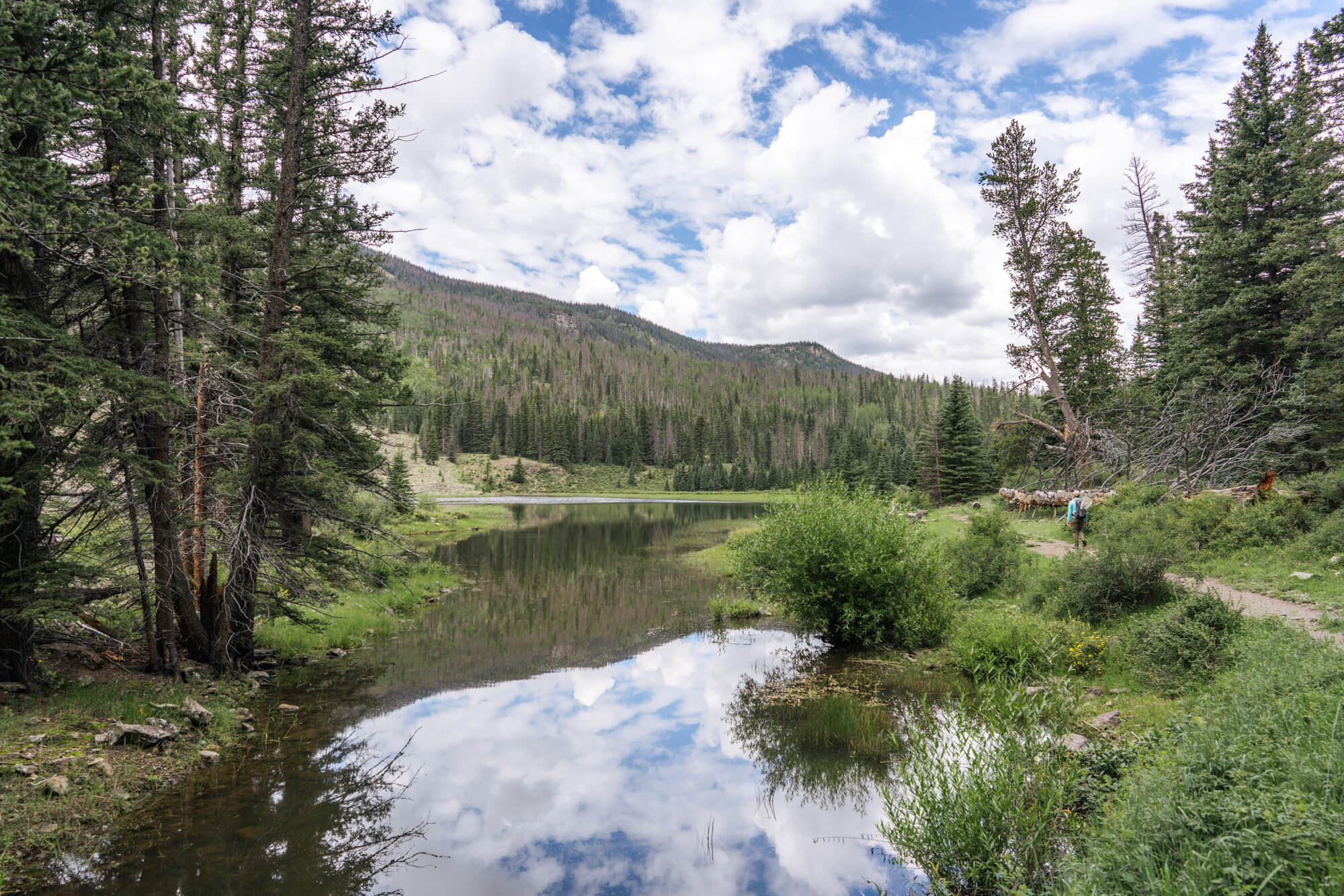
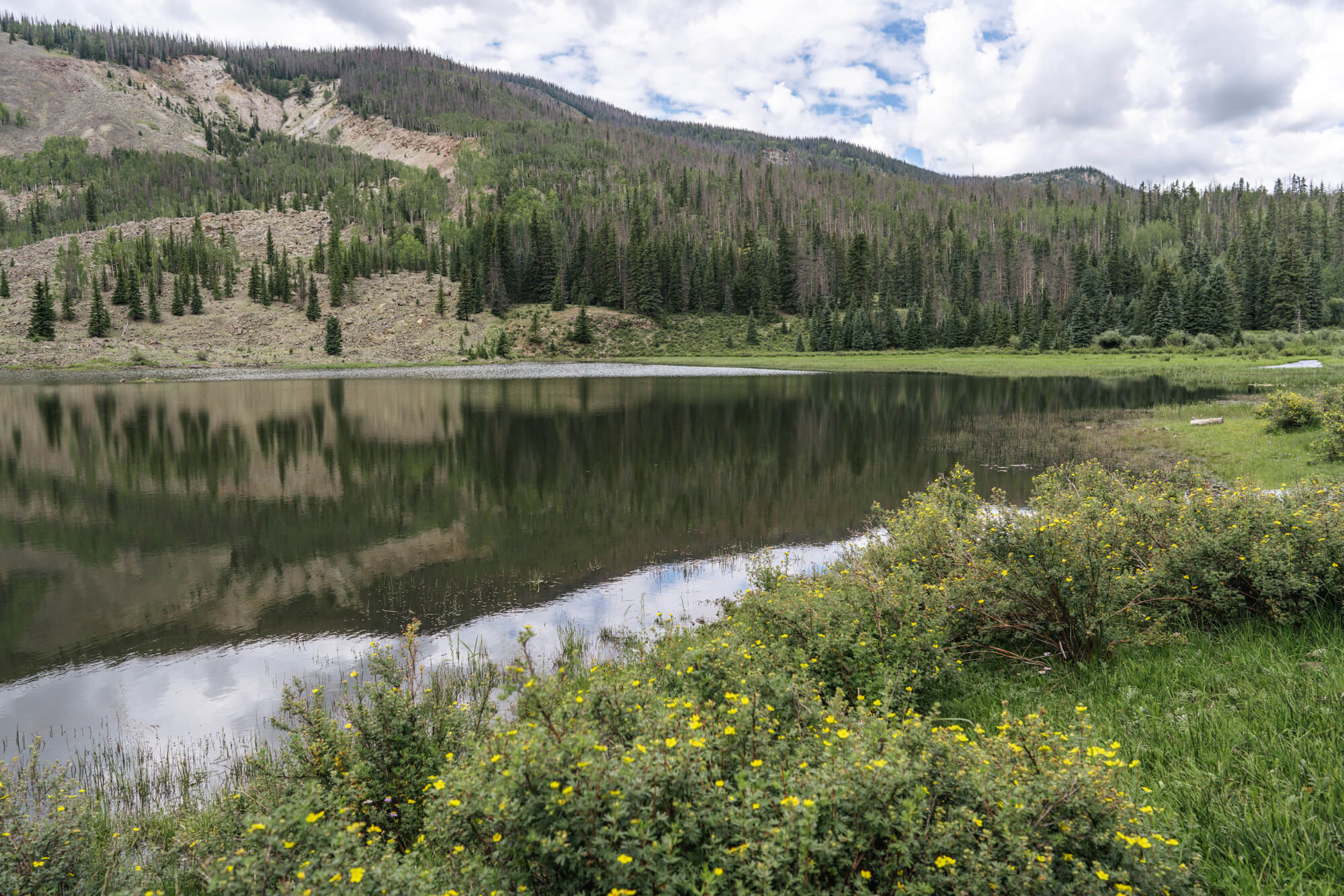
Not long after this we found the marker we were looking out for: a man-made fish barrier. It’s placed along the creek just above the lake to keep the non-native species out.

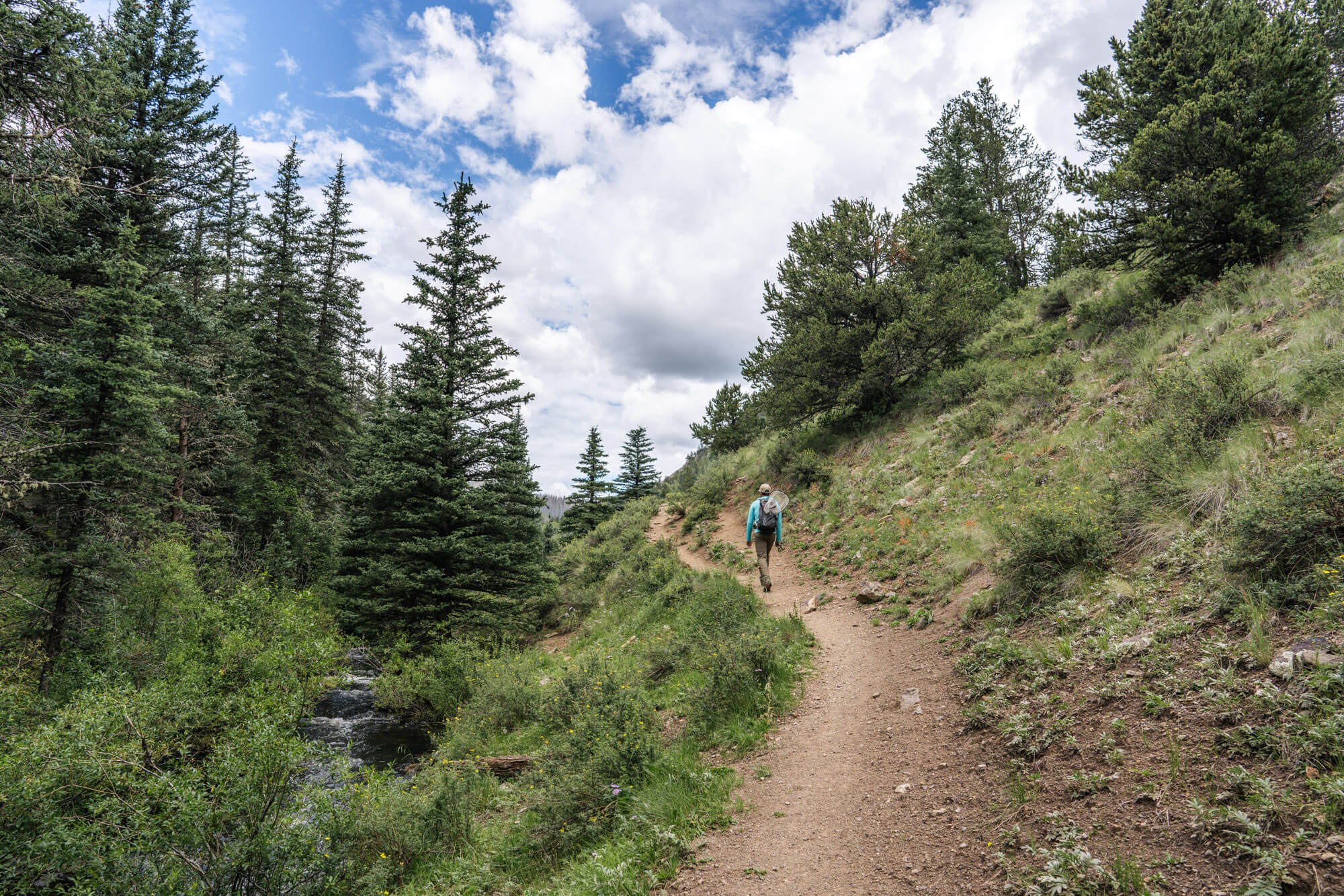
After the fish barrier, the trail goes through a narrow canyon filled with white water. As we crested the hill, we laid eyes on our destination: a wide meadow with a small creek meandering through it. It looked like perfect trout water.

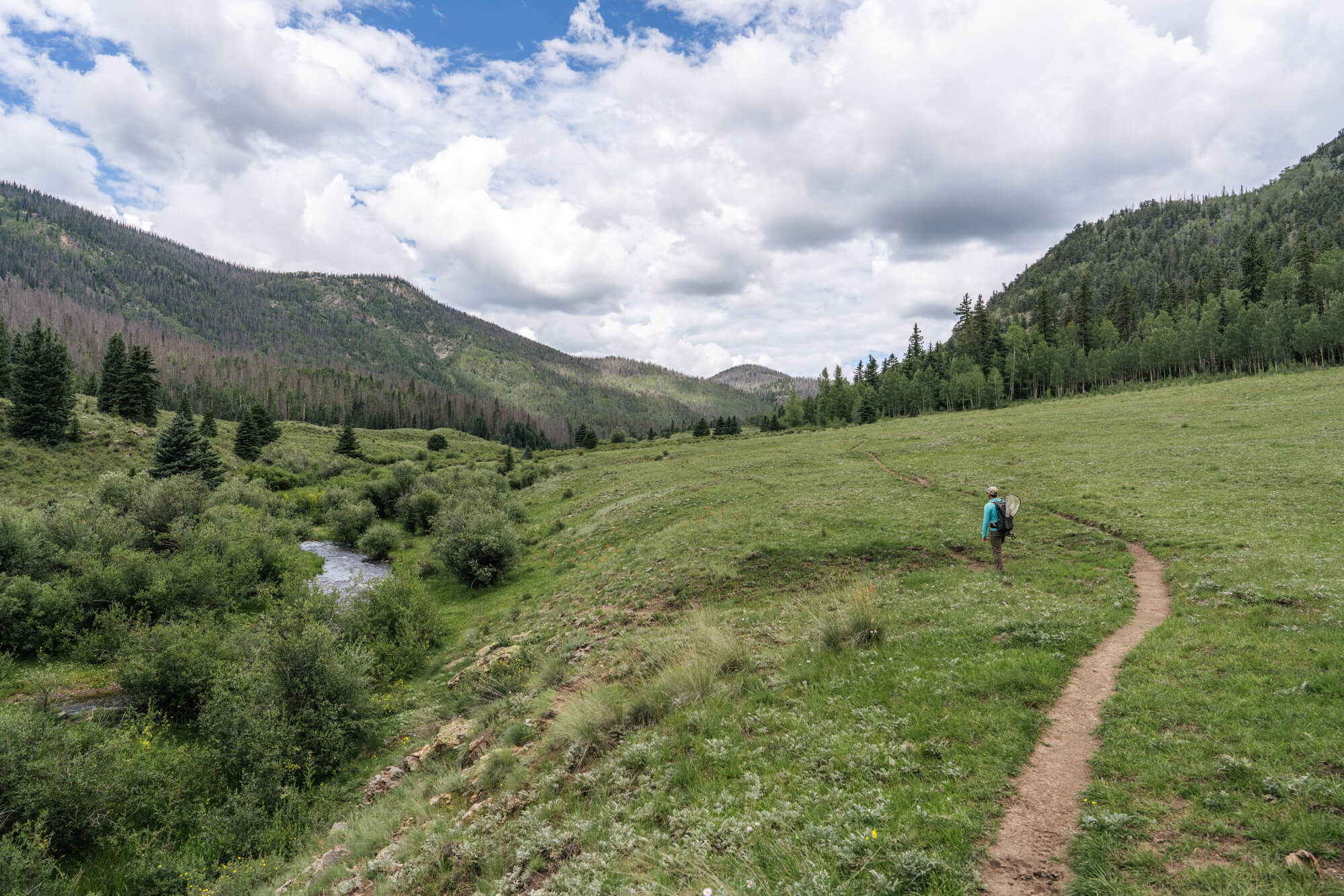
Once in the meadow, we opted to follow use trails down to the creek, while the main trail continued on further up the valley to the creek’s headwaters. We set up our rods quickly as we wanted to get in as much fishing as possible before the myriad of clouds already developed into thunderstorms. The summer monsoon was in full swing and it looked like we would get a piece of it today.
The creek looked absolutely sublime. Easy casting, good gradient, more water than we was expecting, and many undercut banks and deep holes. Not sure we could dream up a more perfect trout stream… well actually, the one in my dreams would have less cow pies. Aside from that, though, the stream of dreams.


Cory tied on a size 14 Parachute Adams dropped to a size 16 Beadhead Pheasant tail. On the second cast we landed our first Rio Grande Cutthroat, a small fish born in its native range.

Alyssa jumped into the same hole and after just a few casts landed a stunner of a Rio on a dry. It was a male still red in the cheeks from spawning earlier in the summer and a stout 13″ long. We were stoked to see a fish of this size in this creek.
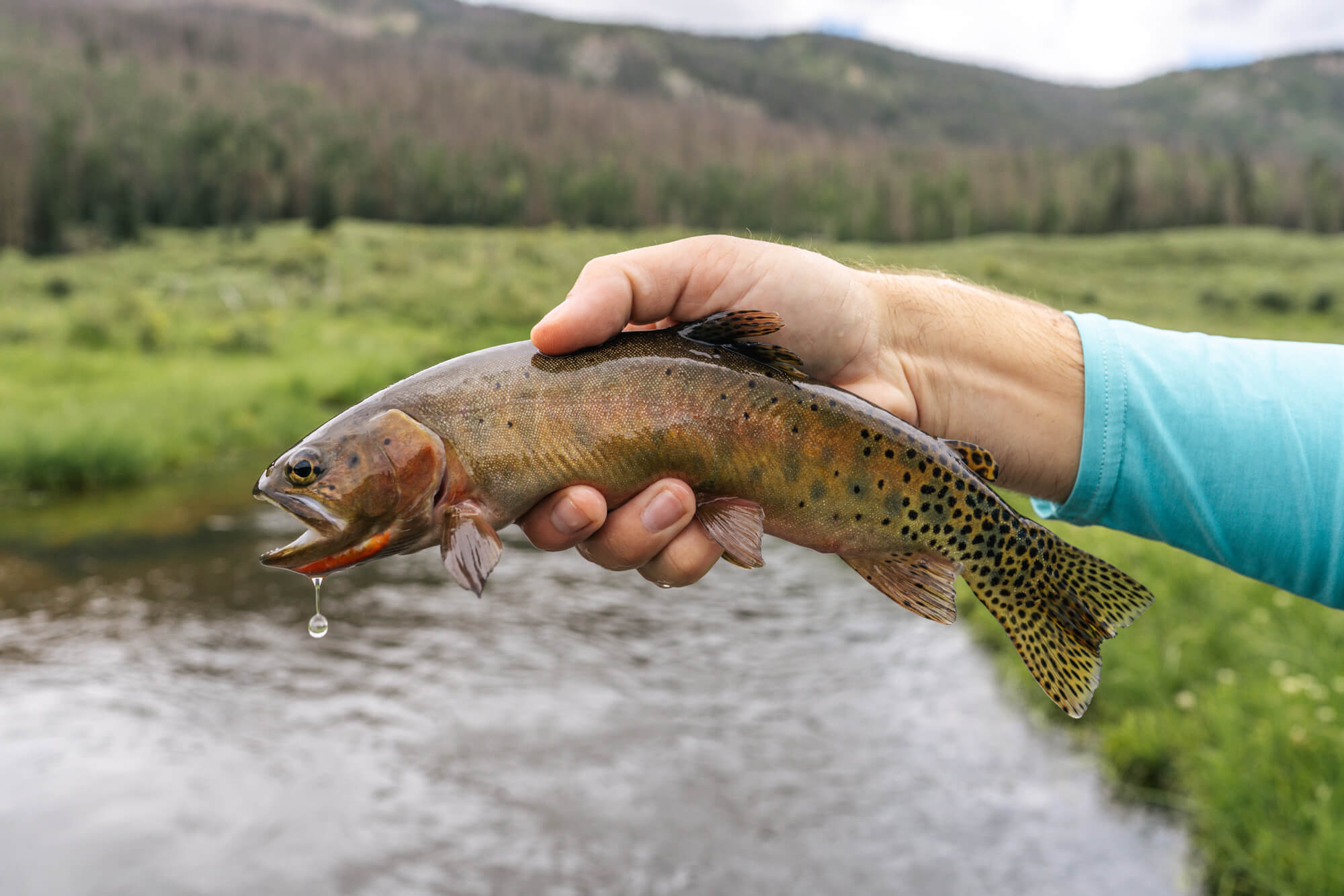
We slowly worked our way upstream, quickly noticing the fish were mostly hiding under banks and in the deeper holes.
The next hole we chose to fish was a spot the current slowed behind a big bolder and next to a cut bank. It didn’t look like the deepest spot but seemed like it should hold a fish. Cory had a few perfect drifts with no action, but for whatever reason on the fourth or fifth attempt, a big fish came up from the bottom and hammered the Parachute Adams. There was a flash of red followed by another huge flash.
It dragged Cory up and down the stream a couple several times, but eventually we got the 16.5″ male Rio Grande to the net. Phew! Landing this monster fish from this small creek is one of our fondest memories or our Colorado trip.

We were able to fish for another hour and eat lunch before the sky started to get nasty. We managed several more 8-10″ fish but no more monsters. Eventually, a bolt of lightning hit a nearby hill – an almost immediate flash-BANG! that scared the shit out of us. It was far too close for comfort, so that was our cue to pack it up and head out before things got even dicier.
On our way back, the heard of cows had wandered over to the trail and were very inconveniently blocking the only way out. Cory played rancher for 15 minutes, whistling and scooting them a long until another pair of fisherman came up from the opposite direction and forced the herd up the hill away from the trail.

This open grazing was very common in the South San Juans and we’re very torn by it. On the one hand, these cows trample down and graze the local vegetation and definitely do not follow Leave No Trace principles with their plentiful cow pies. On the other, ranching is tradition that goes back more than a hundred years before the government ever owned these lands, so perhaps they have priority. It’s an interesting dichotomy. But we digress…
We wish our time at this perfect tributary creek wasn’t cut short by the afternoon thunderstorms (that was the closest we have ever been at a lightning strike and it was mildly traumatizing). Better safe than sorry. We’re thankfully to have hooked into some beautiful Rio Grandes, and we hope to return some day to find that the native fish are still thriving.
